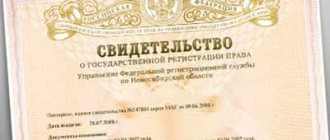Registration of an accident with a traffic police officer
traffic police protocol for free in word format
Attention! If, when hitting an obstacle, the traffic police service was involved in registering an offense, then the official is obliged to record a number of information:
- personal data of the car driver (name, address, telephone, passport),
- explanations of the culprit of the accident, as well as other participants,
- information about eyewitnesses,
- description of the accident, specific designation of the offense,
- information about vehicle damage.
All this must be reflected in official documents recording the fact of the road accident.
As the situation is investigated and all events are identified, the inspector must draw up the following papers:
- Protocol for inspection of the accident scene. The section of the road where the accident occurred is necessarily reflected here, and the nearest streets are indicated. The shape, markings, signs, traffic lights on the road, the condition of sidewalks, coatings, unevenness, weather conditions are described - all this is important when investigating an accident. In addition, the protocol must include information about the time of the inspection, the size and distance of the inspection, the evidence seized, the circumstances of the accident, as well as statements from the injured persons,
- Certificate of traffic accident. The form of the document was approved by the Order of the Ministry of Internal Affairs in 2011. The certificate reflects the participants in the accident, the time and date of the incident, vehicle registration numbers, information about the victims and damage to the vehicle. It is possible to issue such a certificate to the driver of a car either immediately at the scene of an accident, or with a slight delay, for example, when an accident occurs at night, the papers are handed over the next day,
- Road accident diagram. To draw up such a document, you will need to make accurate measurements of the distance of the incident, describe the object that the car hit, indicate the braking distance, characterize nearby objects, auxiliary landmarks, and so on. Also, if there are significant points of an accident, it is necessary to reflect them to present a complete picture of the accident.
- Vehicle technical inspection report. This is necessary to detect damage and malfunctions resulting from an accident. The degree of damage and the area of distribution of violations must be reflected. The technical inspection will make it possible to establish how the collision occurred, at what distance the objects were from each other, and whether any particles of earth, clothing, blood, and so on were found. Such information will also simplify the process of investigating a traffic accident,
- Protocol for monitoring the level of driver sobriety. The procedure is carried out in the presence of witnesses if it is revealed that the driver could have been intoxicated, which led to the accident. The driver is sent to a medical facility, and after the examination, the narcologist issues a conclusion on the condition of the person.
The absence of any of the documents is recognized as a procedural violation on the part of the official.
CASCO payments: list of insured events.
How to appeal a fine for hitting an obstacle
As with other violations, the fine can be appealed. 10 days are allotted for this. In this case, you should initially contact the organization that issued the resolution. If this does not help, you will have to go to court. However, for a positive outcome, it will be necessary to collect evidence confirming the absence of the motorist’s fault.

Thus, a driver who finds himself in such a situation may be charged with various types of liability. The fine for hitting an obstacle will depend on the conditions of the incident. It is worth knowing that there is no special article for such incidents.
Registration of an accident without a traffic police officer
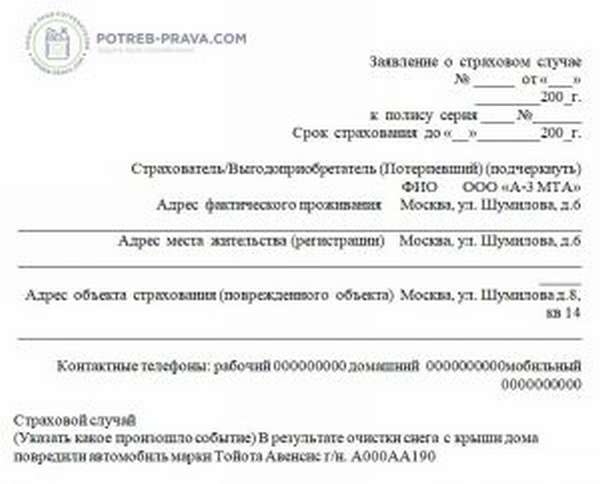
statements about the occurrence of an insured event free of charge in word format
Situations are allowed in which, as a result of an accident, the parties reach an agreement among themselves without involving traffic police officers.
This is only possible if both parties have suffered, there are no mutual claims, and each driver has completed compulsory motor liability insurance.
If there is only one participant in an incident involving a collision with a foreign object, then the involvement of law enforcement officers is mandatory.
To record an incident on the road, persons must fill out a special notice sent to the insurance company. This option is used only if there is no traffic police inspector on file.
Please note! The following information is required to be included in such notice:
- a description of the situation that resulted in the damage,
- road accident diagram,
- nature and degree of harm.
Practice shows that it is better to contact traffic police officers to resolve the situation, since officials will accurately determine the nature of the damage, the causes of the accident and will be able to take appropriate measures.
ATTENTION! Look at the completed sample application for the occurrence of an insured event:
Attention! Our qualified lawyers will assist you free of charge and around the clock on any issues. Find out more here.
Registration of an accident
It is necessary to register a collision with an obstacle immediately after its occurrence. Without certificates from the relevant authorities about the accident, the insurance company will have a formal basis for refusing to pay.
Traffic police or local police officer
The Insurance Rules state that the event must be confirmed by documents from the competent authorities . In the event of a collision with an obstacle, only traffic police officers are competent to make a decision. Because the car was in motion. If the car was damaged by third parties, then it would be necessary to contact the local police officer.
When can you do without certificates?
Some insurance companies provide CASCO clients with a green corridor. This is the right to file a statement about the occurrence of an event without confirming it with documents from the competent authorities.
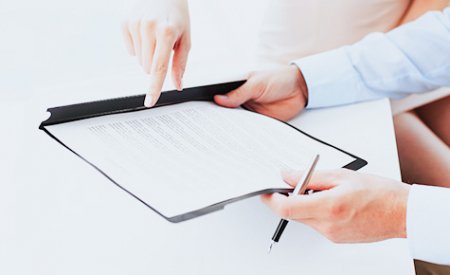
Typical conditions for receiving payments without certificates:
- once during the insurance period with damage to no more than two adjacent parts;
- unlimited number of times no more than one detail, nuance;
- limited amount to be reimbursed, for example no more than 50 thousand rubles.
At the stage of concluding a contract, this issue must be clarified with an employee of the insurance company, asked to be indicated in the Insurance Rules and studied in detail.
What is hitting an obstacle?
Hitting an obstacle is a collision of a vehicle with a stationary object. Such an incident is also recognized as an accident and entails liability measures.
The objects of an accident in this case are:
- bridge support,
- pillars near the road,
- trees,
- Construction Materials,
- special fencing,
- buildings and structures,
- the doors of another car left open.
The degree of danger of such actions may vary; in some situations, a collision can be compared to a collision between two cars; accordingly, the damage of such an accident will also vary. In addition, harm can be caused to the health and even lives of people.
Watch the video. Registration of an accident without the traffic police:
Hitting an obstacle
Important! The concept of “collision with an obstacle” means an incident in which a vehicle collided with a fixed object. Such a collision is rightfully considered an accident and is officially included in the list of road accidents.
Most often, modern drivers run into:
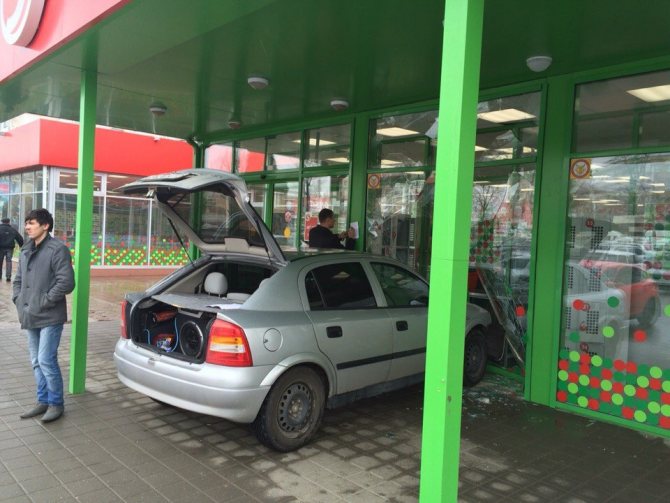
road poles;- bridge supports;
- trees near the roads;
- fencing;
- stored building materials;
- roadside buildings, structures, structures;
- parked vehicles.
Many people do not pay attention to the danger of a collision. Meanwhile, it is comparable to a head-on collision between two cars. A collision can end very badly - with serious bodily injury, or even death of drivers and/or passengers of the vehicle. And the higher the speed of a moving vehicle that hits an obstacle, the higher the probability of such an outcome. Unfastened seat belts also increase the risk of death for people in the car.
What could be the reasons for the collision?

Practice shows various reasons why drivers hit stationary objects.
These include the following:
- violation of traffic rules, failure to fasten a seat belt, speeding, alcohol intoxication, and so on,
- drinking or drinking while driving, smoking in the car,
- overwork,
- inattention,
- using a mobile phone while driving a car.
There is also such a factor as weather conditions, which not every driver can cope with.
Free consultation with a lawyer regarding an accident.
○ CASCO and hitting an obstacle.
Colliding with a stationary object is usually an insured event under CASCO. Therefore, you can count on compensation in the event of a collision. Most companies provide the possibility of paying compensation for minor damage. But many of them find completely legal ways to avoid transferring funds.
For example, you call your insurance company after an accident and describe the situation. At the other end of the line they assure you that your case is on the insurance list and offer to come for registration. You, happy that you don’t need to collect a bunch of papers, go to the company, write a statement, to which you are told that they will not pay you anything. This is explained by the fact that you left the scene of the accident without waiting for the insurance employee, thereby canceling the possibility of obtaining insurance.
Thus, hitting a stationary object is a type of accident, which has its own characteristics and nuances. Knowing them will help you get compensation after an accident and get out of the situation with minimal losses.
When there is a threat of criminal liability
Hitting an obstacle entails criminal liability for the driver only if, as a result, such actions that caused the accident will pose an increased public danger. In practice, such an offense develops into a crime if harm has been caused to the life or health of people.
The Criminal Code of the Russian Federation provides for articles 264 and 266 for violating the rules of vehicle operation and traffic rules, which results in grave consequences. Accordingly, for criminal prosecution it is essential to identify the reasons why the person committed the collision.
For example, if the person was sober, then for harm to a person’s health as a result of a collision they will be given no more than two years, but if alcohol intoxication was recorded, then up to four years.
If the accident resulted in the death of a person, then the specified periods will increase to five and seven years, respectively. When several people were injured at once (two or more), the punishment will be seven and nine years. In addition, the driver will be prohibited from driving a car for a maximum of three years.

Payments for fatal accidents.
Who to sue in case of an accident, the culprit or the owner, read here.
What to do if, after an accident, the insurance company sued me for damages, read the link: https://novocom.org/straxovanie/straxovaya-podala-na-menya-v-sud-po-dtp-na-vozmeshhenie -ushherba.html
Comments
The traffic rules clause in question is essentially universal. It is often cited when the driver has encountered any obstacle: a stationary car, a pole, a tree, a pile of garbage, or hit an animal.
For example, clause 10.1 states:
- Choose a speed of 60 km per hour in populated areas, and beyond them - 90 km per hour. But this is related to clause 10.2, which determines the specific highest speed.
- When a speed limit sign is installed, it takes precedence over this point. In other words, you should take note of the speed sign. But it can be indicated even more.
- The second paragraph clearly states about hitting an obstacle, and also that dangerous driving is prohibited, even when another driver brakes sharply or cuts off. In this case, the blame for the accident will most likely be on the driver who violated another clause, compared to the fact that you do not comply with clause 10.1 intentionally.
Guided by logic, we can say that this point is precedent. Everyone believes that clause 10.1 has not been violated as long as there is no precedent, that is, a road accident. If it is not there, then your speed was safe.
What excess will not be punished?
Paragraph 10.1 of the traffic rules makes it clear that there is no such excess without punishment. There will be no fine if the speed exceeds less than 20 km per hour.
But if they are not punished for this, this does not mean that there is no violation. A good example for this is a road accident, in which even a slight excess can be a cause of mutual fault and an aggravating circumstance.
When brought to administrative responsibility
The Code of Administrative Offenses of the Russian Federation provides for liability for violation of traffic rules, that is, a separate article is not established for a collision. Punishments under the Code of Administrative Offenses are often fines, determined taking into account the nature and severity of the offense.
Notice! For example, driving an unsuitable vehicle costs 500 rubles. Failure to use a seat belt – 1000 rubles. If a person is under the influence of alcohol, toxic or even drugs while driving a car – 30,000 rubles plus deprivation of a driver’s license for 2 years. Violation of maneuvering procedures – 500 rubles.
What are the reasons for hitting an obstacle?
A stationary object on the road that blocks further movement of a vehicle is considered an obstacle. The following can cause interference for a motorist:
- A car stopped on the road due to a malfunction or damage. For example, the engine suddenly stalls, or a car tire bursts, and the driver is forced to stop to replace it.
- Serious defect of the road surface: large hole, pothole, failure.
- Carcasses of dead or injured animals hit by other drivers.
- A tree that fell on the road.
- Barriers placed by road workers during technical or restoration work.
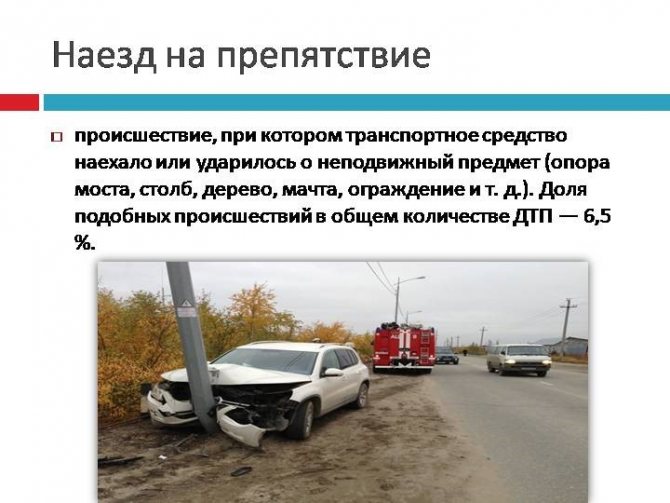
Fig. 1 What does hitting an obstacle mean?
The traffic rules indicate what cannot be classified as an obstacle. This is a “traffic jam” on the road, or a vehicle that has stopped or parked. For example, two motorcycles without side trailers, standing in 2 rows near the roadway, are not an obstacle to movement, even if the driver has to change the previous trajectory.
It is worth mentioning the nuances of section 12 of the traffic rules. If a car stops in the lane, violating the rules, it becomes an obstacle for other road users. For example, a car stopped at a distance of less than 3 m to a solid marking line.
Hitting an obstacle is an accident that occurs when only one vehicle is moving. In an accident, the vehicle runs over or hits a stationary object. An obstacle can be not only a pole or bridge support, but even an extremely unsuccessfully opened door of another car.
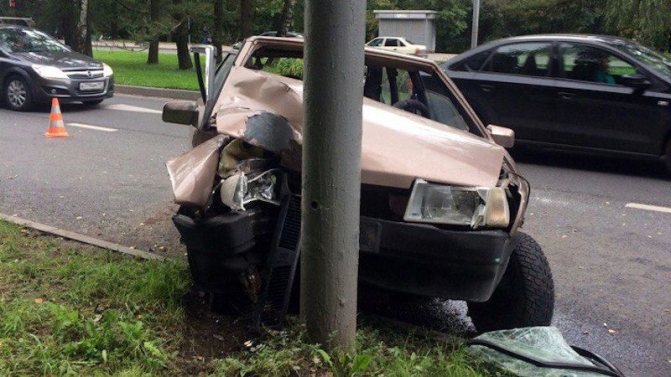
Fig.2 Colliding with a pole
The degree of danger is comparable to a head-on collision: injury or death is equally likely. The risk of death is even more pronounced if seat belts are ignored.
A collision with an obstacle is processed according to the usual requirements for road accidents. Correctly executed documents guarantee receipt of material compensation for damage.
Step-by-step instructions will help you concentrate after an accident and correctly draw up a European protocol that guarantees coverage of losses:
- Stop and immobilize the vehicle.
- Put up an emergency sign (at a distance of at least 15 meters in populated areas, 30 meters outside the city).
- If people are injured, you need to call an ambulance or ride them to the nearest hospital. In case of emergency, victims are transported in their own transport.
- Call the traffic police.
Advice ! If your car crashed into a pole, tree, fence, do not leave the scene of the accident, do not ignore the law! If the circumstances of the accident are established, the culprit will have to part with his license for a year and a half or face arrest for 15 days.
Registration of a road incident is carried out according to the standard scheme: with the involvement of traffic police officers or in their absence, according to the European Protocol.
What does a minor event mean?
Practice also knows cases when, even when hitting a stationary object, a person is not held accountable, since the offense is of minor significance. The criteria for insignificance are determined by the Supreme Court of the Russian Federation by Resolution No. 5 of 2005.
Acts that formally presuppose the establishment of elements of an offense, but due to the nature of the public danger, do not pose a threat and do not harm any social relations, are recognized as minor. Consequently, insignificance is determined by the nature of the act, regardless of whether it is an action or an inaction, which is formally recognized as a violation of the law.
Determination of fault in an accident.
Penalty for hitting an obstacle
If you find yourself in such a situation, two types of liability can be applied:
- administrative;
- criminal
The first option is possible if no harm was caused to other people. In this situation, a collision is equated to a private violation of the rules, since there is no special article of the Code of Administrative Offenses that considers such cases. The punishment will be applied depending on the conditions of the incident (whether the driver was drunk, whether the vehicle was in good working order, etc.).
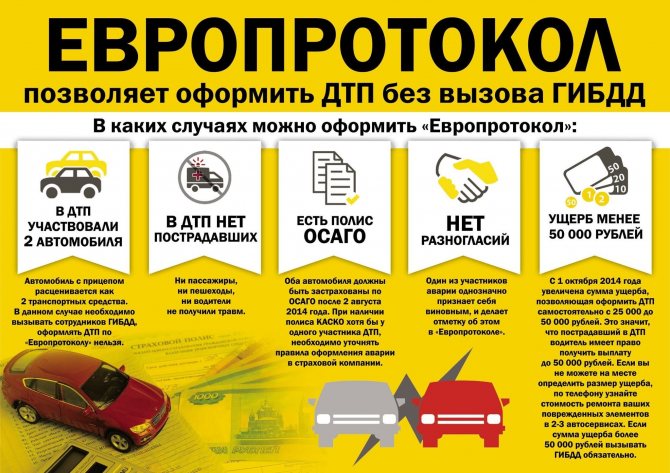
IMPORTANT! No liability is charged if the collision was made on an object installed in violation of the law.
Criminal prosecution is used when causing harm to health or death of third parties. The specific punishment is imposed by the court under the influence of factors of the severity of the consequences and the conditions of the case. So, if a person died, the presence of alcohol or other intoxication is an aggravating condition. In this case, you can get up to 12 years in prison. If harm is caused to health, a measure of arrest for up to 2 years may be applied.
IMPORTANT! In addition to imprisonment, if a criminal offense is proven, the driver is deprived of his license for a period of 36 months.
Minor incident
There will be no liability if the incident is considered minor. What falls under this concept is revealed by the Supreme Court Resolution No. 5 of March 24, 2005. These include acts that do not constitute a significant violation of the rules and have minor consequences.
Reasons for collision
Among the most common causes of hitting an obstacle are:
- Violation of traffic rules, such as speeding, driving while intoxicated, failure to wear seat belts, or using a faulty vehicle.
- Eating or smoking while driving.
- Inattention when making a movement.
- Driver fatigue.
- Listening to loud music, using the phone while driving.
- Difficult weather conditions.
Comments to clause 10.1 of the traffic rules
In fact, this paragraph of the Rules is universal. Very often it is attributed to when the driver hits any stationary (or even moving) obstacle on the road - a stationary vehicle, any debris, fallen trees or poles, animals (elks, cattle and others).
In particular, paragraph 10.1 prescribes:
- choose a speed in populated areas of 60 km/h, outside them - 90 km/h - at the same time, 10.1 is inextricably linked with 10.2, which sets specific values for the maximum speed,
- if there is a sign 3.20 with a speed limit, then it has priority over the point above - that is, in this case you need to be guided by the speed value on the sign, and the sign may indicate a speed even higher (note to paragraph 10.2 of the traffic rules),
- the second paragraph clearly speaks not only about hitting an obstacle, but also about the fact that it is impossible to create dangerous driving - even if someone else is violating - cutting off, braking sharply for no reason, driving out without giving way, from “ramming” it is prohibited in in any case, although the blame for an accident will most likely fall on the one who violated a different clause than if you violate clause 10.1 of the traffic rules unintentionally.
From the logic of violation of this clause, it can be established that it is also a precedent - it is considered that 10.1 of the traffic rules is not violated until a precedent is created - an accident. If there is no accident, there is no fact that the speed was chosen incorrectly - that is, the speed is considered safe.
About unpunished excess
10.1 of the 2021 Traffic Rules makes it clear that, in principle, there can be no unpunished excess. You will not be issued a fine for speeding if the speed limit is no more than 20 km/h.
But the absence of punishment does not mean the absence of violation. And a striking example of this is an accident, where even the slightest excess can cause aggravating circumstances or, in rare cases, mutual guilt.

Responsibility for hitting an obstacle
In the event of a collision with an obstacle, traffic inspectors who are at the scene of the incident, first of all, determine the culprit of the incident. A motorist can only be held liable for such an accident if he was at fault.
In a situation where a motorist, while driving a vehicle, was talking on the phone, drinking or was distracted by loud music, everything is clear. But in some cases, third parties become the culprits of road accidents - owners of property that should not have been located in this place. These could be incorrectly installed signs or buildings and fittings that were not removed after repair work was carried out on this section of the road.
It is for this reason that it is better to involve traffic inspectors in registering an accident, since they will be able to figure out who exactly is to blame for the road accident and bring the culprit to justice.
Criminal liability
Both parties to the accident may be subject to both administrative and criminal liability. Punishment under criminal law may follow in cases where:
- As a result of the incident, the person's health deteriorated significantly.
- There was a pregnancy failure.
- The victim was pronounced dead.
- Injuries received by a person as a result of an accident made him disabled.
If the collision with an obstacle did not result in the death of the victim, and the violation itself occurred due to negligence, the driver is imprisoned for up to 2 years. If at the time of the collision the driver was under the influence of alcohol or drugs, the term of imprisonment is 4 years.
If the victim dies as a result of a traffic accident, the driver is imprisoned for up to 5 years. For a similar violation committed by a drunk driver, the term of imprisonment increases to 7 years.
In a situation where two people die in an accident, the motorist is imprisoned for up to 7 years. And if the offense was committed by him while under the influence of alcohol or drugs, the amount of liability increases to 9 years.
Administrative responsibility
Regardless of the term of imprisonment, the motorist is deprived of his driver's license for 3 years.
A motorist may be held administratively liable in cases where, as a result of an accident, the victim did not receive serious injuries (mild or moderate harm was caused).
If at the time of the traffic accident the driver was driving a vehicle while intoxicated, but fortunately there were no injuries in the accident, the culprit will be held accountable in the form of a fine of 30 thousand rubles and deprivation of a driver’s license for 2 years .
What is hitting an obstacle, and what objects are considered obstacles by law?
The concept of hitting an obstacle
Hitting an obstacle is included in the list of road accidents, since there is a sign of an accident - damage to your car.
Hitting an obstacle means an incident in which a vehicle runs over or hits a stationary object, or falls into a hole. Some of the most common stationary objects that drivers hit include:
- bridge supports;
- road poles;
- trees located near roads;
- Construction Materials;
- fencing;
- roadside buildings, buildings;
- big hole on the road.
From a legal point of view, any object other than a person, animal or other machine can be considered an obstacle.
What punishment can you get for hitting an obstacle?
It all depends on the circumstances. If you hit a tree lightly, there will be no consequences, since you have not caused significant damage. And if, as a result of your violation of traffic rules, passengers were injured in a collision, or worse, died, criminal or administrative liability is possible.
Criminal liability
Criminal liability can occur only if two conditions are simultaneously present:
1. You violated traffic rules.
2. You caused harm to a person’s health, or the accident resulted in his death.
Hitting an immovable obstacle may be caused by a traffic violation. If this violation, committed through negligence, resulted in serious harm to health, for example, termination of pregnancy, loss of vision, hearing, loss of ability to work, then such a violation will be punishable by 2 years of imprisonment.
In the event of the death of the victim, the offender faces imprisonment of up to 5 years. If a violation of traffic rules committed through negligence resulted in the death of 2 or more persons, imprisonment is provided for up to 7 years, in a state of intoxication - from 8 to 15 years.
Along with the main punishment, the offender also faces a ban on driving.
Administrative responsibility
If all elements of the offense are present, the driver may be held administratively liable. The Code of Administrative Offenses does not have a separate article regarding collision with obstacles, however, a fine may be imposed on the violator for failure to comply with traffic rules that caused the collision.
For example, for driving a car, the operation of which was prohibited, a citizen will face a fine of 500 rubles. Failure to wear seat belts will result in a motorist being fined 1,000 rubles. If a motorist is under the influence of alcohol, drugs or toxic substances while driving, he will be punished by a fine of 30,000 rubles with deprivation of the right to drive for up to 2 years. Violation of the rules for maneuvering on the roadway may result in a fine of up to 500 rubles.
ConsultantPlus has many ready-made solutions, including how to compensate for damage caused as a result of an accident. If you don't have access to the system yet, you can sign up for a free trial online! You can also get the current K+ price list.
Minor Event
If the incident in the form of a collision was considered minor, then there will be no prosecution.
Subscribe to our newsletter
Yandex.Zen VKontakte Telegram
Thus, minor acts are generally understood to mean only those acts that formally contain all the elements of an administrative offense, but do not represent a significant violation of protected social relations. The insignificance depends on the nature of the act or inaction committed, the role of the violation, the extent of the harm caused and the severity of its consequences.


